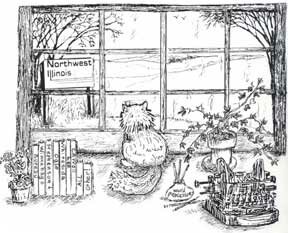Discover rewarding casino experiences. 
|
Temperance became the fashionable thing. Wear a folded red ribbon on the breast to show your dedication to temperance. Businesses, too, could show their support. When Rudolph Luecke built the ornate store on Lanark’s Broad Street in the 1880’s, he rented out the street level openings and used the second floor for bathing rooms, a barber shop and a TEMPERANCE Billiard Hall. One of the several reasons for a concentrated campaign against drinking was its effect on all members of a household ... Even the children. Many saloons had the rule that if a customer’s chin could rest on the bar’s edge they could be served. This included children who came with Papa’s lunch bucket to be filled with beer. Seeing Papa drink and sometimes become rollicking teased the children to take a drink, too. All family members could take to drink to help them forget the fact that they had little or nothing to live on, were half-starved, living in squalor with no way to rise above their level. Making no excuse for drinking, there were concrete reasons for alcoholism. There were no agencies to offer relief, no bureaus to aid families or the homeless. Resort to drink brought temporary solace—time and again, until addiction. City slums were filled with immigrants from all places in Europe or Asia who were lonely or anxious living on the streets or in squalid conditions hardly imaginable who took up the saloon as refuge, its crowds giving some relief from his fears. Out in the rural areas or the still wilderness of the West, Midwest, the cowboys, hired hands, farmers, housewives, laborers with little or no money in hostile environs took to drink also in their boredom and loneliness. “Whiskey towns” often supplied their needs ... Every store in a settlement selling liquor. Support and companionship were in liquid form. Each section of the country had its specialty drink. In New England, for instance, made cider that might be “aged” into apple jack. It was estimated that a family there could go through a barrel of cider a week. In the 1870’s it was estimated that on average eight gallons of liquor was consumed per capita annually. But, by the 1890’s that amount had risen to seventeen gallons. Demon spirits were everywhere. In Chicago, for example in the neighborhoods surrounding Hull House, the social welfare center, nationally known, founded by Stephenson County native, Jane Addams, there were nine churches and 250 saloons. A survey showed that on average there were ten saloons for every church, twenty to one, saloon to schools. Alcohol was used freely by politicians to buy votes ... Vote for the candidate and you’ll get free beer ... Or more than one vote, more than one beer! Aldermen looked the other way if there were complaints the saloon was open twenty-four hours. Few ordinances controlled the saloon especially in the city. When market prices for, say, corn or rye were so low it wasn’t profitable to haul the grains long distances, taking a week or more to get there, use up the oxen and your own plow time, was expensive so distilleries and breweries were put up to convert grains to spirits ... It’s believed it cost only 20¢ a gallon to make alcohol as opposed to going to market. Many a still or brewery was built in remote towns off the beaten path because of that rationale. Alcohol could be found everywhere. Then, perhaps curiosity took hold. In New York City, the 1870’s, a study took place to find that sixty percent of the prisoners in its jails were drunkards. A national committee at about the same time discovered that of 13,402 jail inmates, fifty percent claimed that alcohol was the “determining factor in the committing of their crimes.” If that was so, shouldn’t some limitations be put on sale of alcohol? As the drinking had increased with time, so too did action to form temperance societies increase. People began to speak out. Some towns voted to go “dry.” It was a line of many a town’s ballot at election time. Then entire states voted “dry.” Of course, the situation grew to the introduction of Prohibition, the nation went dry. You know Americans, they always overdo it! Mobs or the “Machines” of gangsterdom went into business making illegal liquor, another problem related to temperance supporters. If it wasn’t one thing it was another! In the very beginning, action against alcohol was spontaneous or casual, local individuals or groups taking up the cause with little hurrah or hallelujah. Many incidents did not even make the headlines even as early as 1856 when Maria Waterbury, Polo, in her dressing gown, under cover of darkness made her way to take charge of a stack of barrels filled with spirits. Ax in hand. —NEXT WEEK.
|






